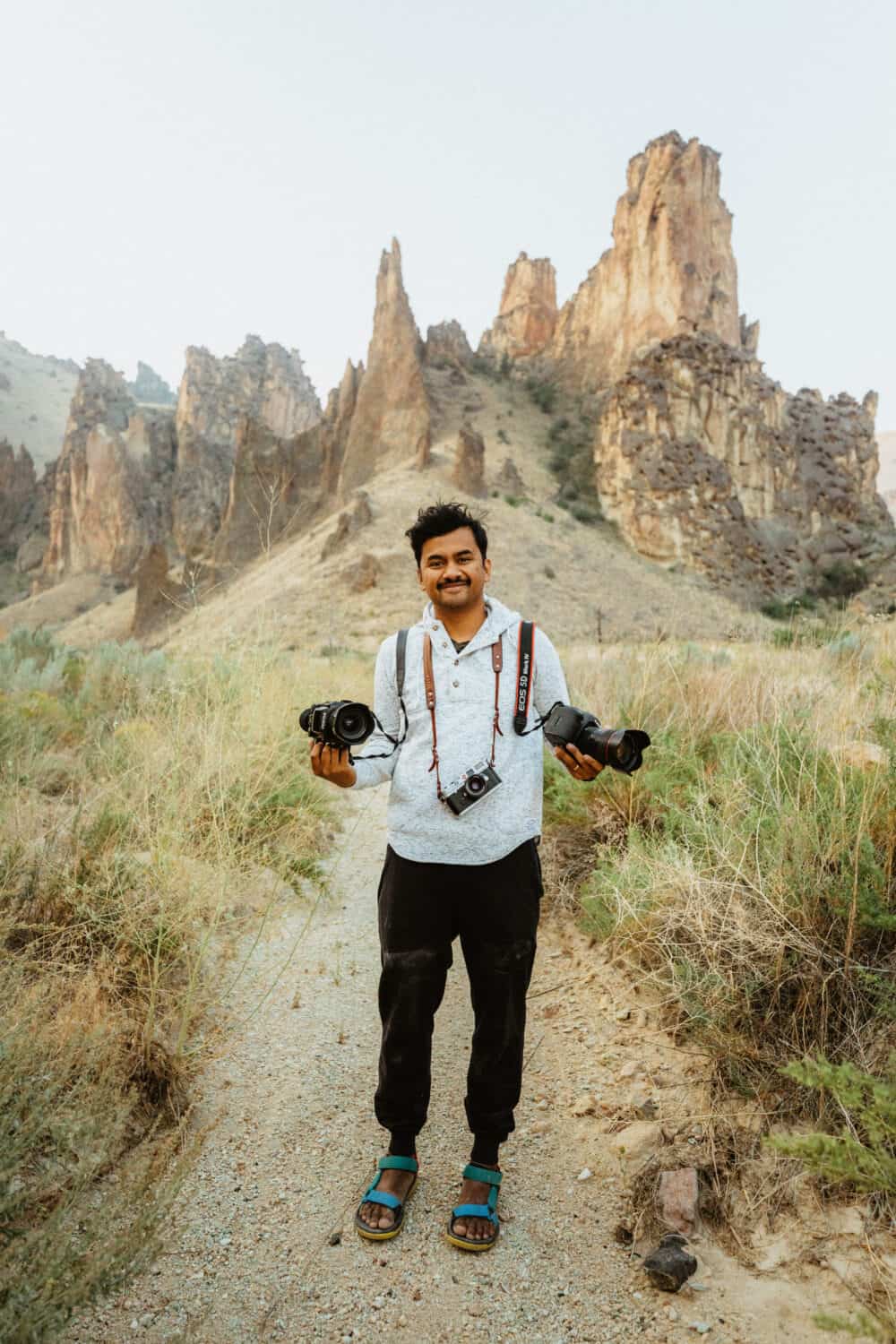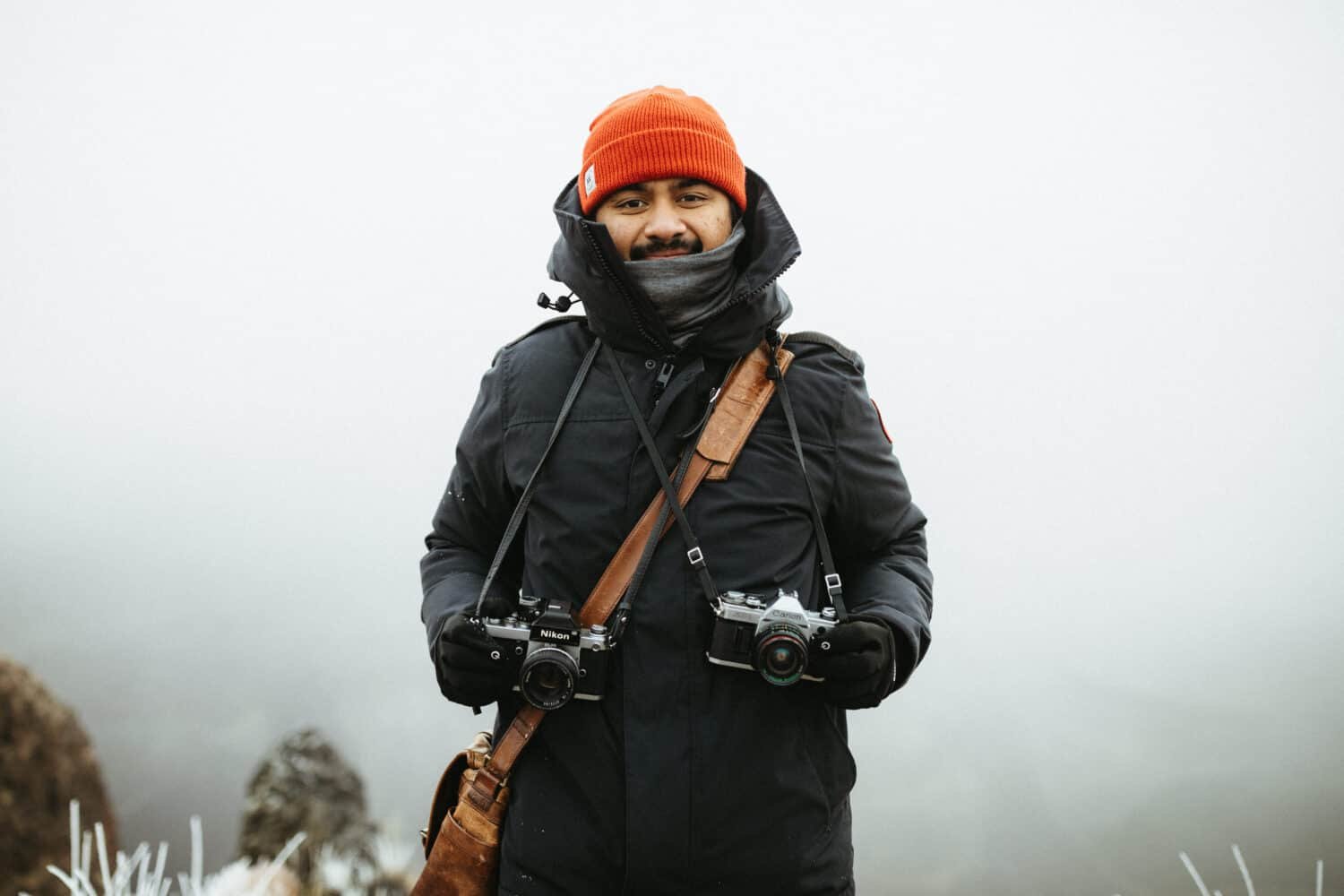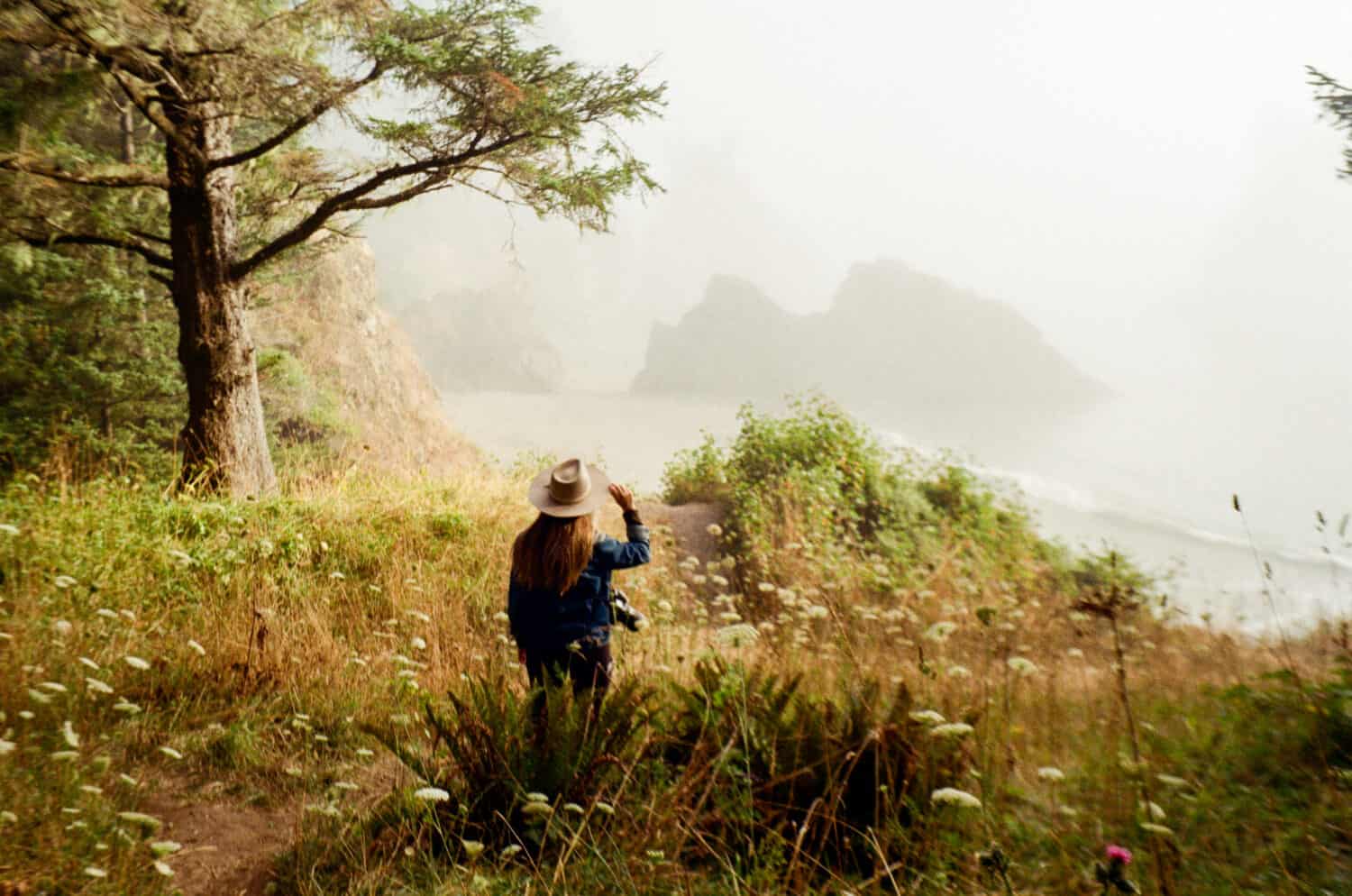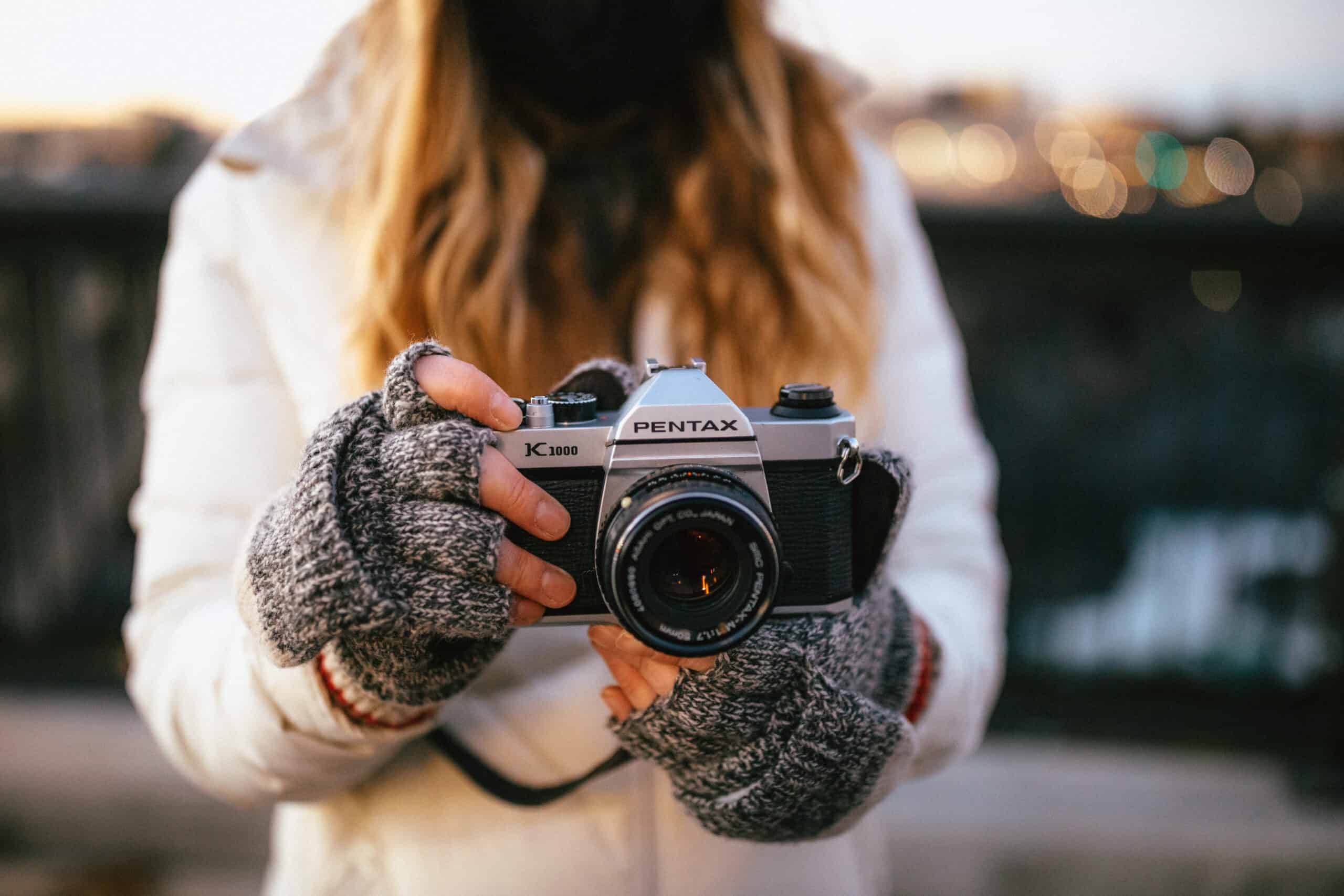Post Summary: How To Store Film Before, During, and After Shooting
Alright! You got your first film camera, finished your first film roll…now what?
Unlike digital files that can last essentially forever, film negatives require special care to preserve them for the foreseeable future. Environment, light, and handling can all affect the lifespan of the film!
In this post, we’re teaching you how to store film negatives before exposure, out in the field, and how to store film afterward to last for years. Let’s get started!

Want to learn more about film photography? You might list these posts too:
- The 25 Best Gifts For Photographers
- The 10 Best Beginner Film Cameras Under $500
- 12 Brilliant 35mm Color Film Stock For Gorgeous Images
Where To Buy Film
There are lots of great places to buy film – from your local drugstore to specialty camera shops.
For the biggest selection paired with the most convenience, we like to buy our film from Film Supply Club. It’s a members-only platform, but a super affordable $5 per month to get seriously deep discounts on film.
Looking for other accessories? Browse these epic gifts for film photographers!
How To Store Film Before Shooting: Keep It Cool & Dry
Did you know that film can expire? As soon as the film comes off the factory floor, they start the slow process of degrading and losing quality. However, there is an easy step YOU can do, to extend the life of your film and keep it fresher, longer.
Throw it in the fridge!
Yep, that’s right – keeping film cool has been known to preserve film’s freshness and longevity. If you’re not shooting your rolls right away, pop it in the fridge until it’s time to use them. Make sure they are in a sealed ziplock bag to prevent accidents or add silica packets to prevent moisture buildup.
Why does film expire? If you think about it, film is just a complex combination of chemicals, which can react in varied temperatures, lighting, and even lose quality over time. Film can be an investment, so make sure you are treating it like one from the beginning! In general, color film degrades faster than black and white.
For convenient access, we have a tiny film fridge in our office. It’s actually portable too, so if we are traveling on a commercial shoot in a hot environment, we can store it in the car knowing it’s cool and safe! Here’s the link to our small, portable fridge.

How To Store Film Out In The Field
Traveling with Film Tip #1: Never Pass It Through An X-Ray Machine
Let’s say you’re going on a long trip. If that trip requires taking an airplane, it’s essential that you DO NOT let your film pass through the X-ray machine. If it goes through, you can pretty much say goodbye to all your film rolls.
Film needs to be hand-checked, and here’s our process for the quickest way to get your film through security safely:
- For air travel, store your film in a clear plastic bag. This allows TSA workers to see quickly that nothing else is in the bag except film.
- As soon as your bags are on the belt, let a TSA agent know that you have film and ask for a hand-check.
- Once the film bag is handed over to an agent, go through security like normal, grab your bags on the other side, and wait at the counter for your film to be hand-checked.
- We’ve seen them just thumb around the bag and pass it back to us, and other times each individual piece is taken out and inspected. Be patient, kind, and thank them after it’s given back to you.
Traveling with Film Tip #2: Keep It Out Of The Heat
Generally, we keep our film with us. Leaving it in the car can expose it to dangerously high temperatures! When deciding which is the right decision for you, consider factors like weather, outside temperature, and light exposure when taking film out in the field.
When taking film out in the field, it’s important to remember that film should be kept dry, and out of the light. We like to store ours in a water-resistant travel tote, similar to the size of a small toiletry bag.
Developing Film
We won’t pretend to be experts in developing film at home – we’ve never done it ourselves! However, if developing color film at home is something that you want to try, here is a great step by step youtube video that shares the entire process. Have fun!
So, how do we develop our film then? We send it out to a trusted developer. For years, we’ve been sending our film to State Film Lab to get developed. From there, they process the film, email us digital files, and then send back the original negatives for archiving.
If you are a beginner shooting film for the first time, we recommend sending your film off to a developer! This way, you can receive the digital files and use one of these amazing photo editing apps for your smartphone to tinker with them even more!
Archiving Film Negatives At Home
If you send your film out to get developed like we do, you will receive your negatives back in the mail. What should you do with the negatives after that?
First of all, they will often come back in a protective plastic sleeve. Don’t store negatives long-term in this sleeve, but rather take it off when you are ready to archive them.
Before handling negative film, make sure to wash your hands to prevent unwanted fingerprints or dirt on the film negatives. If you have a thin pair of cotton gloves, these can be used as an extra layer of sterilization. The more safeguards to have in place for archiving your film, the longer your film will last.
Read More: 12 Genius Ways Photographers Can Thrive During Slow Season

Gear for Film Negative Storage
Binders – Unlike the binders you would buy for a new school year, these archival film binders are a bit more heavy-duty. They have three rings to fit plastic sleeves but are enclosed on all sides with a secure clasp. This helps keep out unwanted light and protects from dust and other grime that may be in the air.
Plastic Sleeves – (also called archival storage pages) These clear plastic covers safeguard your film against dust and other elements. They come in practically every size of film and can fit well together when in a book or storage binder.
Film Storage Conclusion
Developing correct film storage habits from the beginning can greatly improve your film experience. It will allow you to get the most out of your investment, and capture high-quality images with ease. We hope you learned something in this post about how to store film, and wish you the best in our future film endeavors!
Did we miss any tips for how to store film negatives? What is some advice you have for beginner film photographers? Share your knowledge with us in the comments below!
MORE PHOTO TIPS
The 20 Best Travel Photography Accessories To Make Life Easier
20 Essential Aerial Photography Tips For Your Next Scenic Flight
15 Best Oregon Photography Locations For Your Next Bucket List
